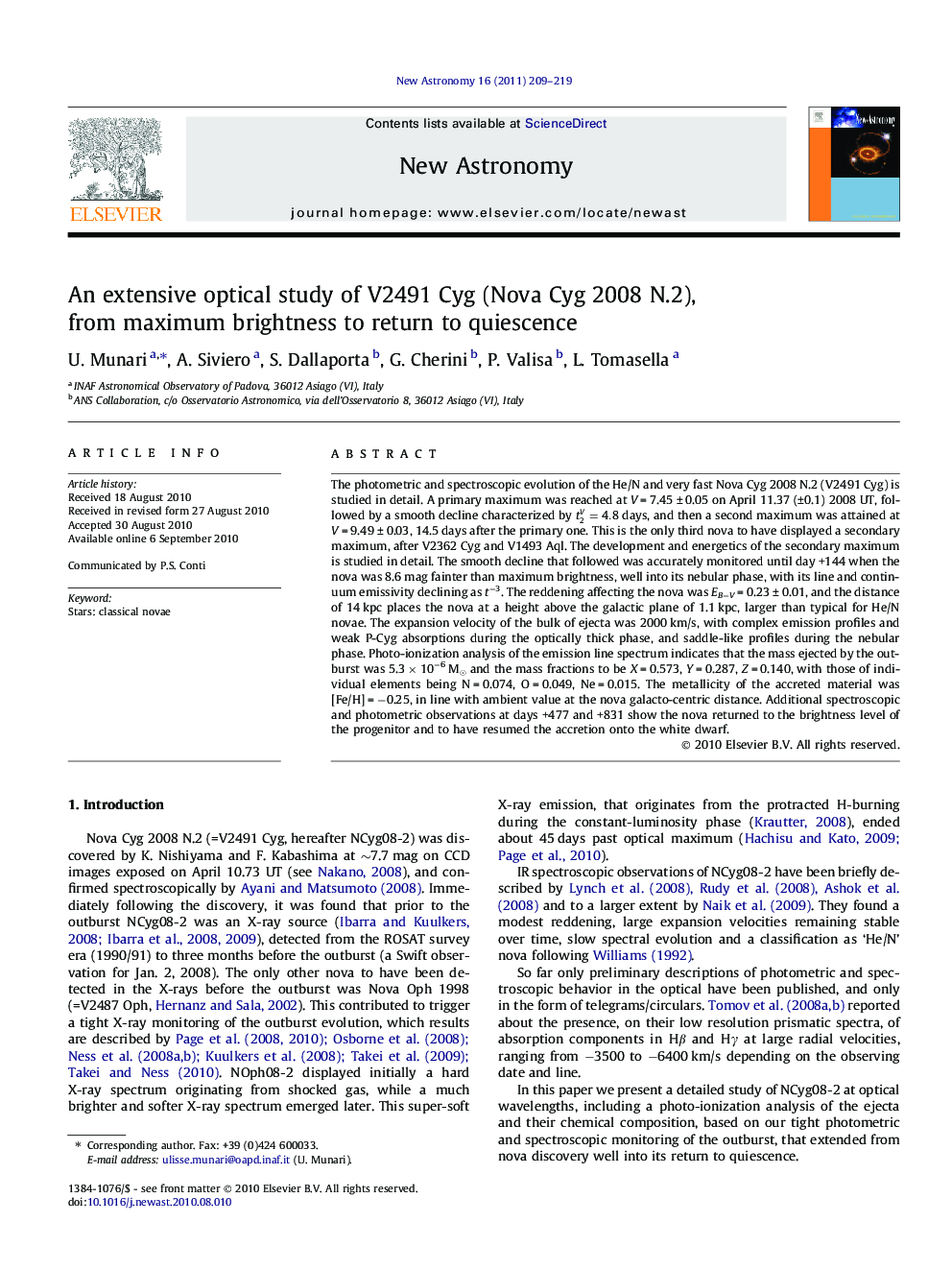| کد مقاله | کد نشریه | سال انتشار | مقاله انگلیسی | نسخه تمام متن |
|---|---|---|---|---|
| 1779529 | 1022005 | 2011 | 11 صفحه PDF | دانلود رایگان |

The photometric and spectroscopic evolution of the He/N and very fast Nova Cyg 2008 N.2 (V2491 Cyg) is studied in detail. A primary maximum was reached at V = 7.45 ± 0.05 on April 11.37 (±0.1) 2008 UT, followed by a smooth decline characterized by t2V=4.8 days, and then a second maximum was attained at V = 9.49 ± 0.03, 14.5 days after the primary one. This is the only third nova to have displayed a secondary maximum, after V2362 Cyg and V1493 Aql. The development and energetics of the secondary maximum is studied in detail. The smooth decline that followed was accurately monitored until day +144 when the nova was 8.6 mag fainter than maximum brightness, well into its nebular phase, with its line and continuum emissivity declining as t−3. The reddening affecting the nova was EB−V = 0.23 ± 0.01, and the distance of 14 kpc places the nova at a height above the galactic plane of 1.1 kpc, larger than typical for He/N novae. The expansion velocity of the bulk of ejecta was 2000 km/s, with complex emission profiles and weak P-Cyg absorptions during the optically thick phase, and saddle-like profiles during the nebular phase. Photo-ionization analysis of the emission line spectrum indicates that the mass ejected by the outburst was 5.3 × 10−6 M⊙ and the mass fractions to be X = 0.573, Y = 0.287, Z = 0.140, with those of individual elements being N = 0.074, O = 0.049, Ne = 0.015. The metallicity of the accreted material was [Fe/H] = −0.25, in line with ambient value at the nova galacto-centric distance. Additional spectroscopic and photometric observations at days +477 and +831 show the nova returned to the brightness level of the progenitor and to have resumed the accretion onto the white dwarf.
Journal: New Astronomy - Volume 16, Issue 3, April 2011, Pages 209–219